Article
As Easy as ABE: A Pharmacist’s Overview of Updates to the COPD GOLD Guidelines
Author(s):
Data show that dose-response relationships and long-term safety of ICS in people with chronic obstructive pulmonary disease are unclear and require further investigation.
Counseling on inhaler technique is crucial for helping patients with COPD have maximal efficacy with their therapy. Credit: peterschreiber.media - stock.adobe.com.
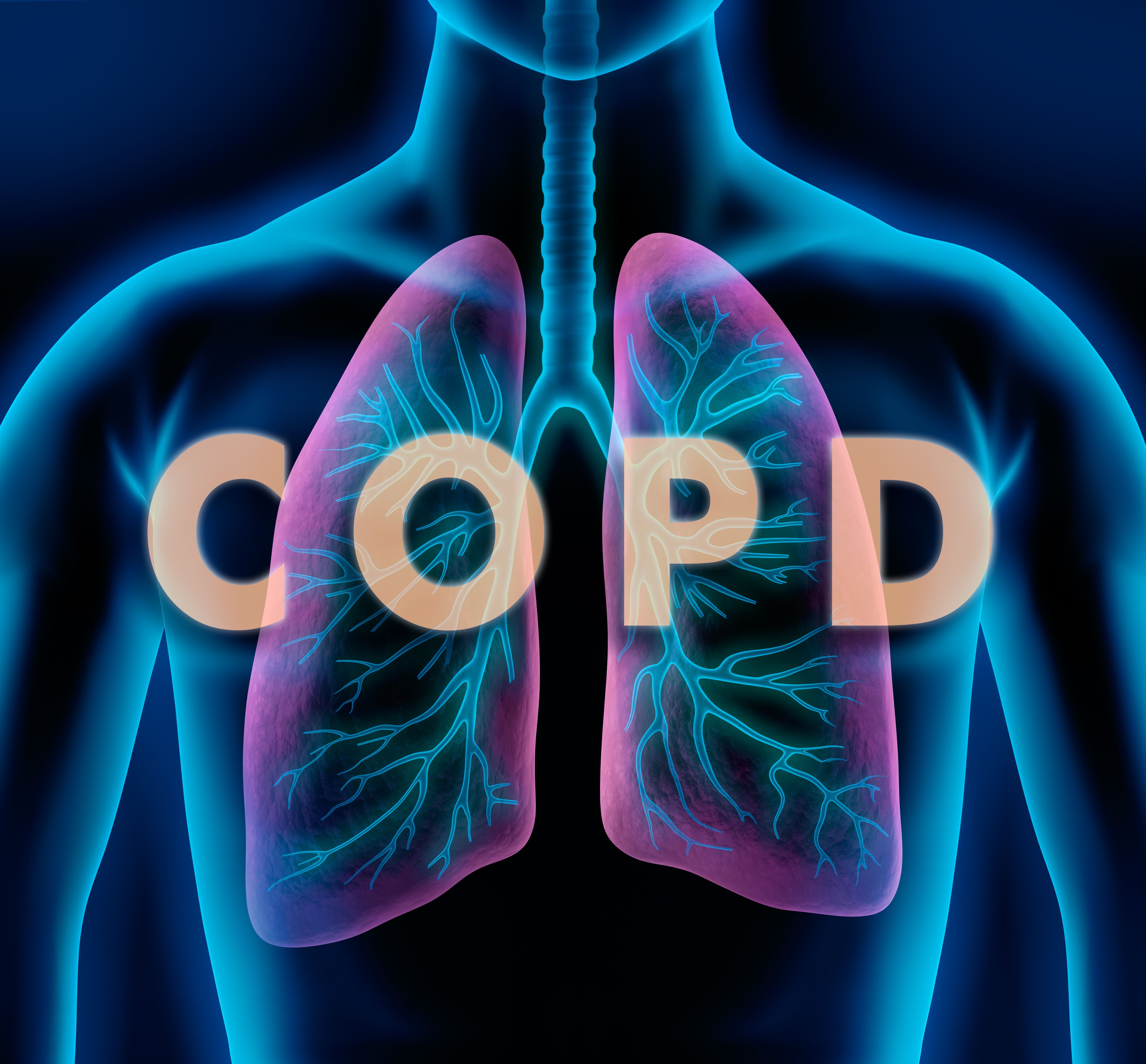
New Year, new GOLD guidelines for chronic obstructive pulmonary disease (COPD). To help our pharmacists maximize patient safety and efficacy, we will recap the updates to the GOLD guidelines in this article. Although there were a few updates to diagnostics, assessments, and imaging, this article will mainly focus on medication therapy.
The ABCD categories have now been eliminated. Categories C and D have been replaced with Category E, which puts emphasis on exacerbations alone. It is now recommended to use a LABA + LAMA (long-acting bronchodilator + long acting antimuscarinic agent), and NOT a LABA + LAMA + ICS (inhaled corticosteroid), unless the patient meets certain criteria (Figure 1).
Figure 1. ABE GOLD Groups Treatment. Credit: Mayo Clinic.
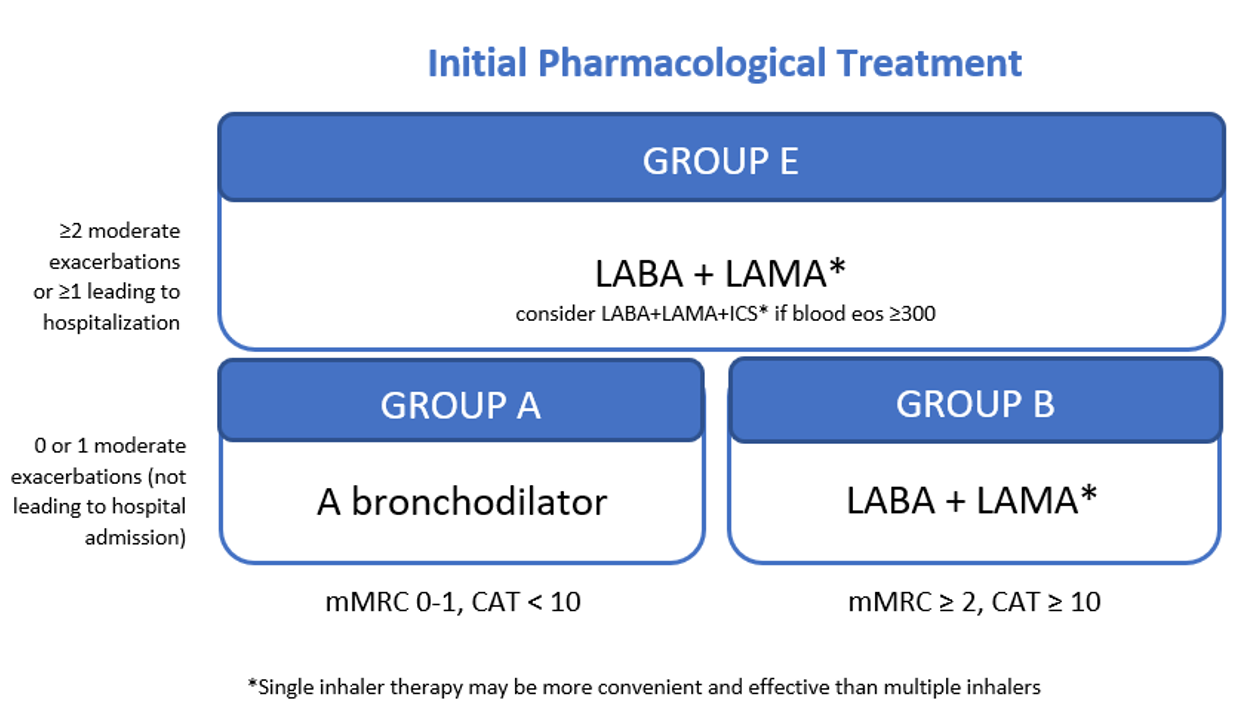
In vivo data suggest that the dose-response relationships and long-term safety of ICS in people with COPD are unclear and require further investigation. There are studies to support that ICS have little to no effect on a low eosinophil count (<100 cells/µL). Therefore, there is a low likelihood that these patients have little benefit from ICS.
However, patients who have a blood eosinophil count of >300 cells/µL, had multiple hospitalizations from COPD exacerbations, have concomitant asthma, or have had 2 or more exacerbations in a year would be considered for triple therapy. A risk-benefit discussion would be warranted when the patient has had 1 exacerbation or a blood eosinophil count of 100 to <300 cells/µL (Figure 2).
Figure 2. Factors to consider when adding ICS to long-acting bronchodilators. Credit: Mayo Clinic.
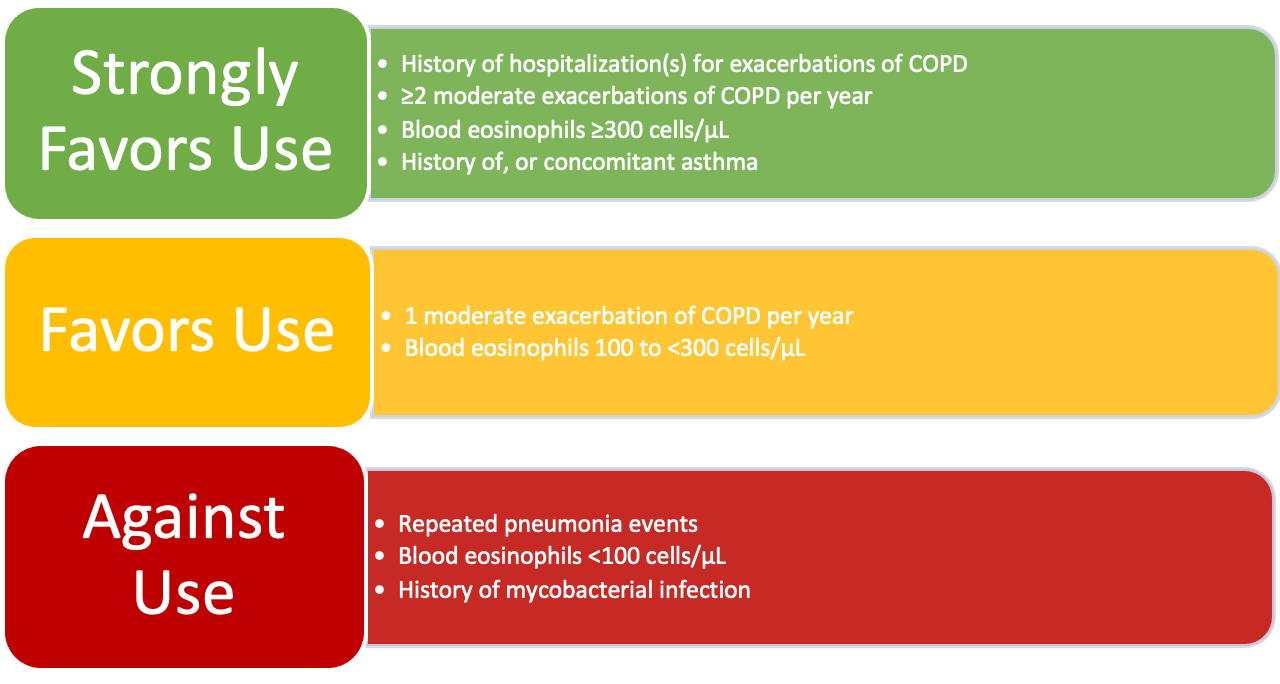
Withdrawal of ICS
There have not been any definitive studies on the consequences of withdrawing ICS therapy on symptoms and exacerbations. There has been some evidence for a modest decrease in FEV1 with ICS withdrawal, which could be associated with increased baseline circulating eosinophil numbers.
One study looking at ICS withdrawal in patients with dual bronchodilator therapy showed that the loss in FEV1 and increased exacerbation was more frequent in the patients with a baseline blood eosinophil count of ≥300 cells/µL. It would be important to look at the patient’s history before having a risk-benefit discussion of ICS withdrawal.
Inhaler Education and Adherence
Counseling on inhaler technique is crucial for helping patients have maximal efficacy with their therapy. Inhaled delivery devices are highly variable in dose preparation, inhalation technique, and device maintenance.
Selection of a device should be individualized for the patient. A great objective way to help show your patient feedback in real time is the In-Check Device (Figure 3).
Figure 3. In-Check Inhaler Device. Credit Mayo Clinic.
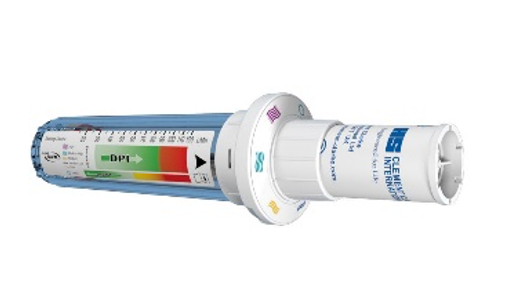
It can also give you, the pharmacist, an idea of the ability of the patient to properly use the inhaler that’s prescribed. Amanda Davis at Kasson Clinic utilizes this for resident and patient education. In addition, it’s important to assess for adherence at each visit as non-adherence can be multi-factorial.
Combination Inhalers Currently on the Market
Patient adherence can be maximized when 1 device is used rather than 2 to 3 inhalers; however, this can be complicated by cost. Luckily, many of these inhalers have drug coupons or patient assistance programs available. See Table below for a synopsis on the available inhalers and strategies that can combat the high cost of these devices.
Table 1. Available Combination Therapy. Credit Mayo Clinic.
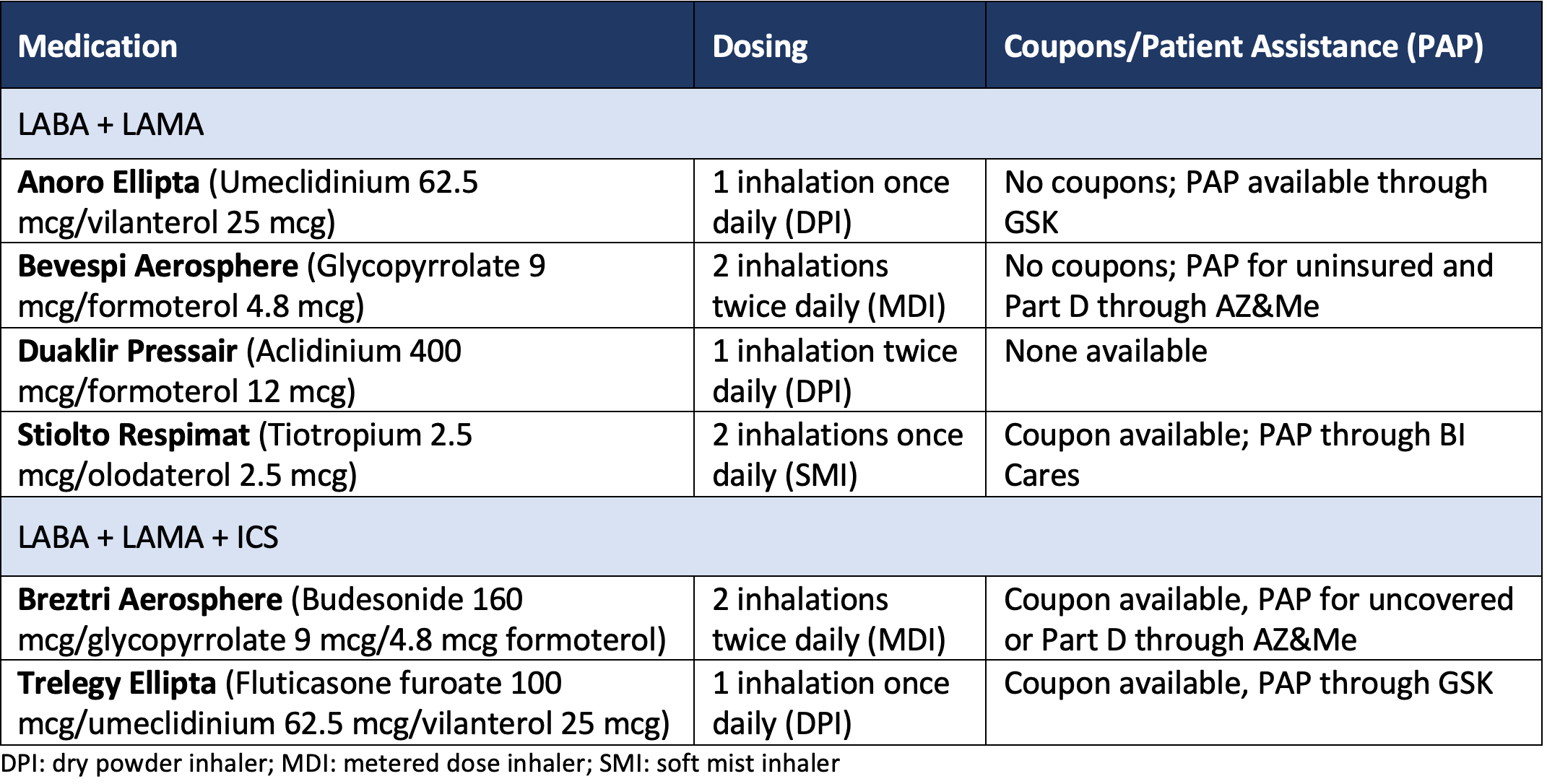
About the Author
Lauren Stonerock, PharmD, PGY2 ambulatory care pharmacy resident, Mayo Clinic – Rochester.
Reference
Global Initiative for Chronic Obstructive Lung Disease (GOLD). Global strategy for the diagnosis, management, and prevention of chronic obstructive pulmonary disease. Accessed January 10, 2023. GOLD-2023-ver-1.1-2Dec2022_WMV.pdf (goldcopd.org)






